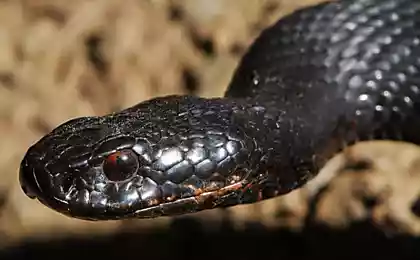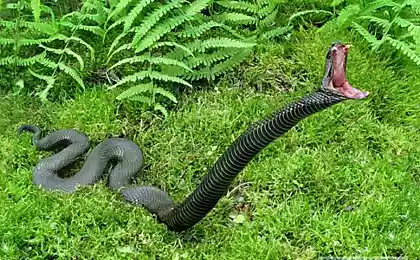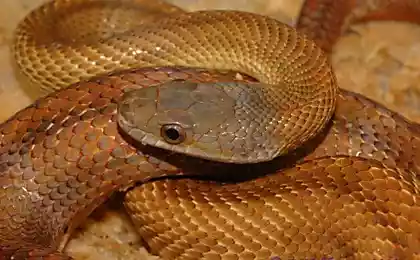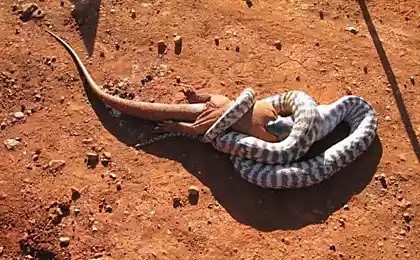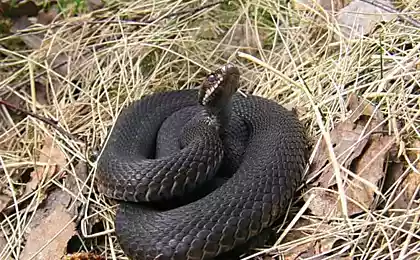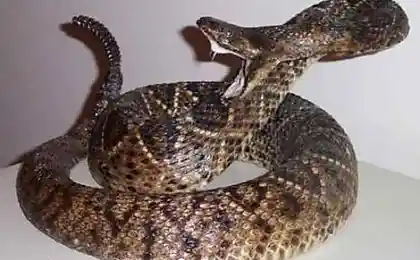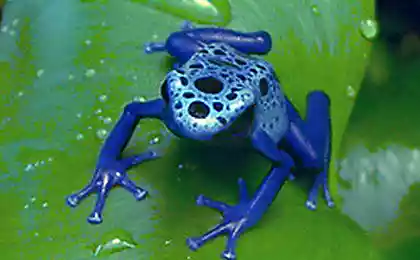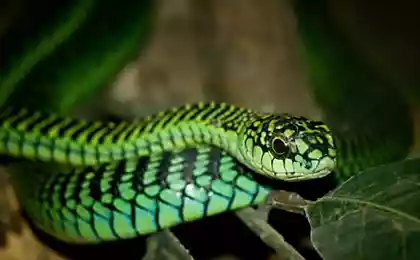191
Ordinary viper - a cautious snake
Ordinary viper (Latin Vipera berus) deserved not very good fame. They say she's poisonous and aggressive. In fact, she looks very angry. In fact, this is a rather cautious snake that does not seek to part with the poison at the first opportunity, but bites only as a last resort. The fact is that the restoration of this very poison requires a lot of energy, so the viper prefers to crawl away and not touch the enemy.
However, do not check the exposure of the snake and tease it in vain: the bite of the viper can deliver not the most pleasant sensations. As a rule, the victim feels severe pain in the place where traces of poisonous teeth are visible. Dizziness, diarrhea, vomiting, nausea, profuse sweating and tachycardia may appear. In severe cases, a person may even lose consciousness. However, deaths after a viper bite are recorded extremely rarely, while children and the elderly are at risk.
But to find out an ordinary viper is not so easy: the color of the body of a snake can be very diverse. The main background is yellowish-brown, gray, brown or even reddish with a copper tint. Along the ridge there is a dark zigzag strip, and a picture in the form of the letter “X” is clearly visible on the head. However, in some areas live completely black individuals, which can be confused with other snakes. The body length of an ordinary viper varies from 50 to 65 (rarely 90) cm.
The “malicious” appearance of the snake is given by overhanging supraocular shields in combination with vertical pupils. Such a harsh appearance really does not dispose to much delight. That is why people often kill vipers when they meet them in the woods. No way! These snakes destroy mice, larvae of harmful insects and other pests. Without them, the delicate balance of nature will be broken.
Ordinary vipers live in swamps, fields, forests, steppes and forest plantations of Eurasia. They are completely unpretentious to habitats. The main requirement is the availability of food and open sunny areas where you can warm up. Vipers are common from the UK to Sakhalin, and can climb the mountains to a height of 2.6 thousand meters. Most of all, they like swamps, where these snakes literally “infested”.
Vipers hide in crevices, between the roots of trees or in other secluded corners. They hunt rodents, frogs, lizards and insects, sometimes ruin nests of birds that had the carelessness to leave their chicks on the ground. As a rule, the snake first bites the victim, and then lets her go and quietly pursues, waiting for the death of the unfortunate.
The mating period for ordinary vipers begins in spring, as soon as good weather is established in their habitats. Surprisingly, these snakes are loyal to their partners and find each other from season to season. After mating, females do not lay eggs: they remain in the body of the snake until young snakes hatch from them. At the end of summer, the viper wraps its body around a stump or tree, leaving the tip of the tail on the weight, and then, as it were, “scatters” the cubs.
Young snakes have a length of 15-20 cm. They are poisonous and quite able to stand up for themselves, so the new mother does not think to take care of them. As soon as the last cub is born, the viper crawls away, leaving the babies to themselves. They are waiting for a life full of dangers, where foxes, badgers, ferrets, hedgehogs, owls, eagles and, of course, people will hunt them. In such conditions, ordinary vipers live no more than 5-7 years, although their total life expectancy is as much as 15-20 years.
Source: zoopicture.ru
However, do not check the exposure of the snake and tease it in vain: the bite of the viper can deliver not the most pleasant sensations. As a rule, the victim feels severe pain in the place where traces of poisonous teeth are visible. Dizziness, diarrhea, vomiting, nausea, profuse sweating and tachycardia may appear. In severe cases, a person may even lose consciousness. However, deaths after a viper bite are recorded extremely rarely, while children and the elderly are at risk.
But to find out an ordinary viper is not so easy: the color of the body of a snake can be very diverse. The main background is yellowish-brown, gray, brown or even reddish with a copper tint. Along the ridge there is a dark zigzag strip, and a picture in the form of the letter “X” is clearly visible on the head. However, in some areas live completely black individuals, which can be confused with other snakes. The body length of an ordinary viper varies from 50 to 65 (rarely 90) cm.
The “malicious” appearance of the snake is given by overhanging supraocular shields in combination with vertical pupils. Such a harsh appearance really does not dispose to much delight. That is why people often kill vipers when they meet them in the woods. No way! These snakes destroy mice, larvae of harmful insects and other pests. Without them, the delicate balance of nature will be broken.
Ordinary vipers live in swamps, fields, forests, steppes and forest plantations of Eurasia. They are completely unpretentious to habitats. The main requirement is the availability of food and open sunny areas where you can warm up. Vipers are common from the UK to Sakhalin, and can climb the mountains to a height of 2.6 thousand meters. Most of all, they like swamps, where these snakes literally “infested”.
Vipers hide in crevices, between the roots of trees or in other secluded corners. They hunt rodents, frogs, lizards and insects, sometimes ruin nests of birds that had the carelessness to leave their chicks on the ground. As a rule, the snake first bites the victim, and then lets her go and quietly pursues, waiting for the death of the unfortunate.
The mating period for ordinary vipers begins in spring, as soon as good weather is established in their habitats. Surprisingly, these snakes are loyal to their partners and find each other from season to season. After mating, females do not lay eggs: they remain in the body of the snake until young snakes hatch from them. At the end of summer, the viper wraps its body around a stump or tree, leaving the tip of the tail on the weight, and then, as it were, “scatters” the cubs.
Young snakes have a length of 15-20 cm. They are poisonous and quite able to stand up for themselves, so the new mother does not think to take care of them. As soon as the last cub is born, the viper crawls away, leaving the babies to themselves. They are waiting for a life full of dangers, where foxes, badgers, ferrets, hedgehogs, owls, eagles and, of course, people will hunt them. In such conditions, ordinary vipers live no more than 5-7 years, although their total life expectancy is as much as 15-20 years.
Source: zoopicture.ru
In France recorded the oldest case of Down syndrome
Scientists have discovered the secret of visual similarity of spouses

